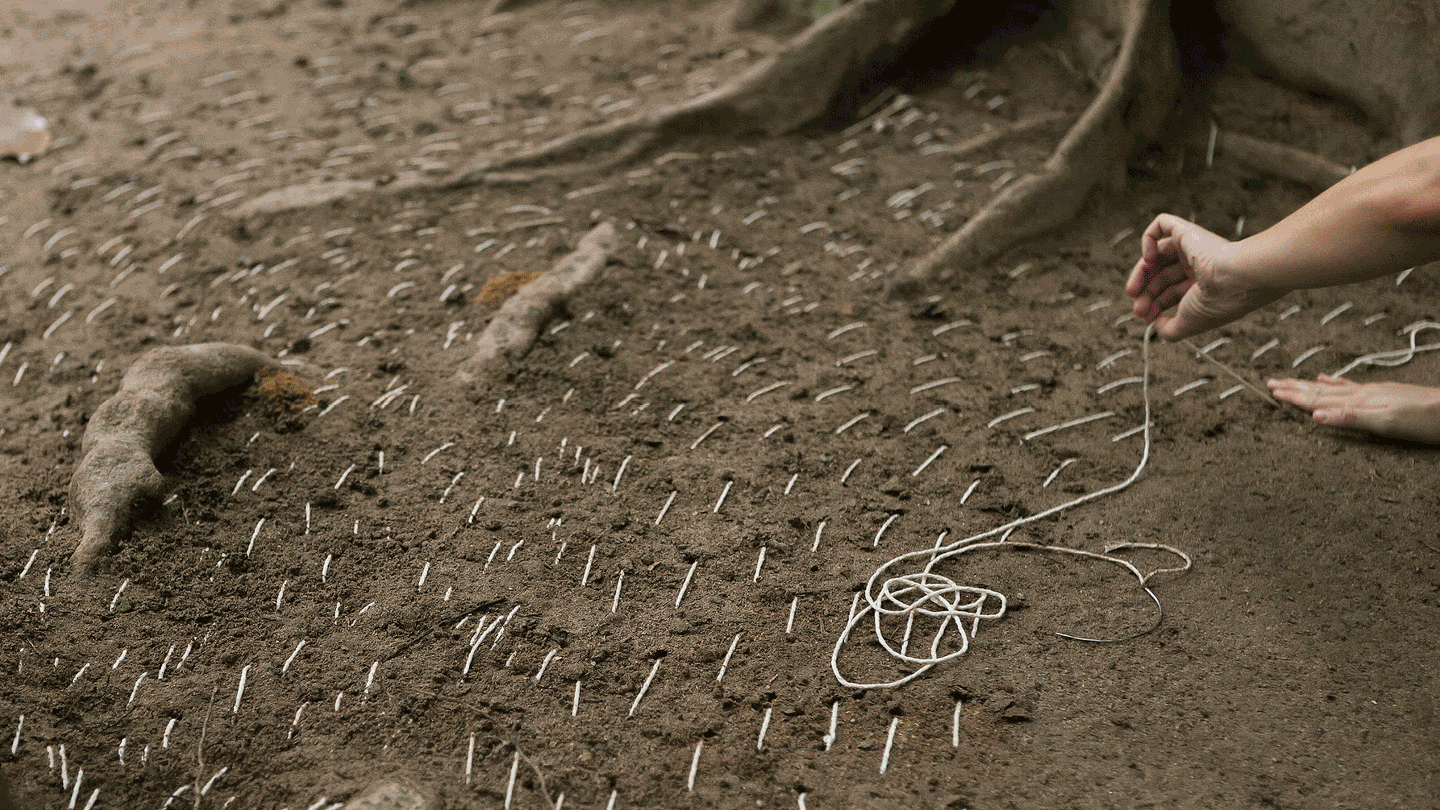Sob as cinzas, brasa (Under the Ashes, Embers)
April 20–September 17, 2023
R. Barão de Piratininga
555 - Jardim Faculdade
Sorocaba-
18030-160
Brazil
Sob as cinzas, brasa (Under the Ashes, Embers)—the choice of title for the 37º Panorama da Arte Brasileira (37th Panorama of Brazilian Art) involves multiple layers. There is a heat that burns and endures even though something has been consumed by the fire and turned to ashes; the embers bear the possibility—or the hope—of revived fire.
The Panorama of Brazilian Art was conceived in 1969 by the Museum of Modern Art of São Paulo (MAM) and went on to become one of the most relevant shows in Brazil’s art circuit. In its 37th edition, held between July 2022 and January 2023, the show’s embers were ablaze at a peculiar moment in Brazilian history—during an electoral cycle disputed by widely different political projects, while the country was still reeling from the impacts of the Covid-19 pandemic. Other layers of that period include the country’s reconception based on memories brought to light by the bicentennial of the proclamation of its independence (1822) and by the centennial of the Modern Art Week (1922).
In 2023, the exhibition is being rekindled through a partnership between Sesc São Paulo and MAM. Traveling to São Paulo state’s countryside, the Panorama is gaining a new run between April and September at Sesc Sorocaba. The curatorship is shared by the art researchers, historians and critics Cauê Alves, Claudinei Roberto da Silva, Cristiana Tejo and Vanessa Davidson, who have brought together 26 artists and groups from different generations.
Brazilian art is presented at this Panorama based not only on regional cross-sections—relevant in a country of continental dimensions—but also in view of diversities in ethnic-racial profile, gender and background, with academically trained or self-taught artists, along with urban productions, made in the streets.
While Brazil’s colonial past and its reverberations in the also violent present time serve as fuel for the show, another common thread is the proposal of artistic solutions. The Panorama investigates how artists from Brazilian roots poetically manifest the confrontation of historical and current problems: racism, social inequality, urban violence, the competition between different narratives at play in the never-ending construction of the nation’s collective memories. In the show, art asks and responds to an essential question: what incites the embers that burn under the ashes?
List of artists
Ana Mazzei (São Paulo, 1980—lives in São Paulo)
André Ricardo (São Paulo, 1985—lives in São Paulo)
Bel Falleiros (São Paulo, 1983—lives in New York)
Camila Sposati (São Paulo, 1972—lives in Vienna)
Celeida Tostes (Rio de Janeiro, 1929—1995)
Davi de Jesus do Nascimento (Pirapora, Minas Gerais, 1997—lives in Pirapora)
Éder Oliveira (Timboteua, Pará, 1983—lives in Belém)
Eneida Sanches (Salvador, Bahia, 1962—lives in São Paulo, SP) and Tracy Collins (New Yor, 1963—lives in New York) (LAZYGOATWORKS)
Erica Ferrari (São Paulo, 1981—lives in São Paulo)
Giselle Beiguelman (São Paulo, 1962—lives in São Paulo)
Glauco Rodrigues (Bagé, Rio Grande do Sul, 1929—Rio de Janeiro, 2004)
Gustavo Torrezan (Piracicaba, 1984—lives between Piracicaba and São Paulo)
Jaime Lauriano (São Paulo, 1985—lives between São Paulo and Porto, Portugal)
Lais Myrrha (Belo Horizonte, Minas Gerais, 1974—lives in São Paulo)
Laryssa Machada (Porto Alegre, Rio Grande do Sul, 1983—lives in Salvador, Bahia)
Lidia Lisbôa (Guaíra, Paraná, 1970—lives in São Paulo)
Luiz 83 (São Paulo, 1983—lives in São Paulo)
Marcelo D’Salete (São Paulo, 1979—lives in São Paulo)
Maria Laet (Rio de Janeiro, 1982—lives in Rio de Janeiro)
Marina Camargo (Maceió, Alagoas, 1980—lives in Berlin)
Nô Martins (São Paulo, 1987—lives in São Paulo)
RODRIGUEZREMOR (Denis Rodriguez [São Paulo, 1977—lives in Igatu, Bahia] and Leonardo Remor [Estação, Rio Grande do Sul, 1987—lives in Igatu, Bahia])
Sérgio Lucena (João Pessoa, Paraíba, 1963—lives in São Paulo)
Sidney Amaral (São Paulo, 1973—2017)
Tadáskía (Rio de Janeiro, 1993—lives between Rio de Janeiro and São Paulo)
Xadalu Tupã Jekupé (Alegrete, Rio Grande do Sul, 1985—lives in Porto Alegre, Rio Grande)


